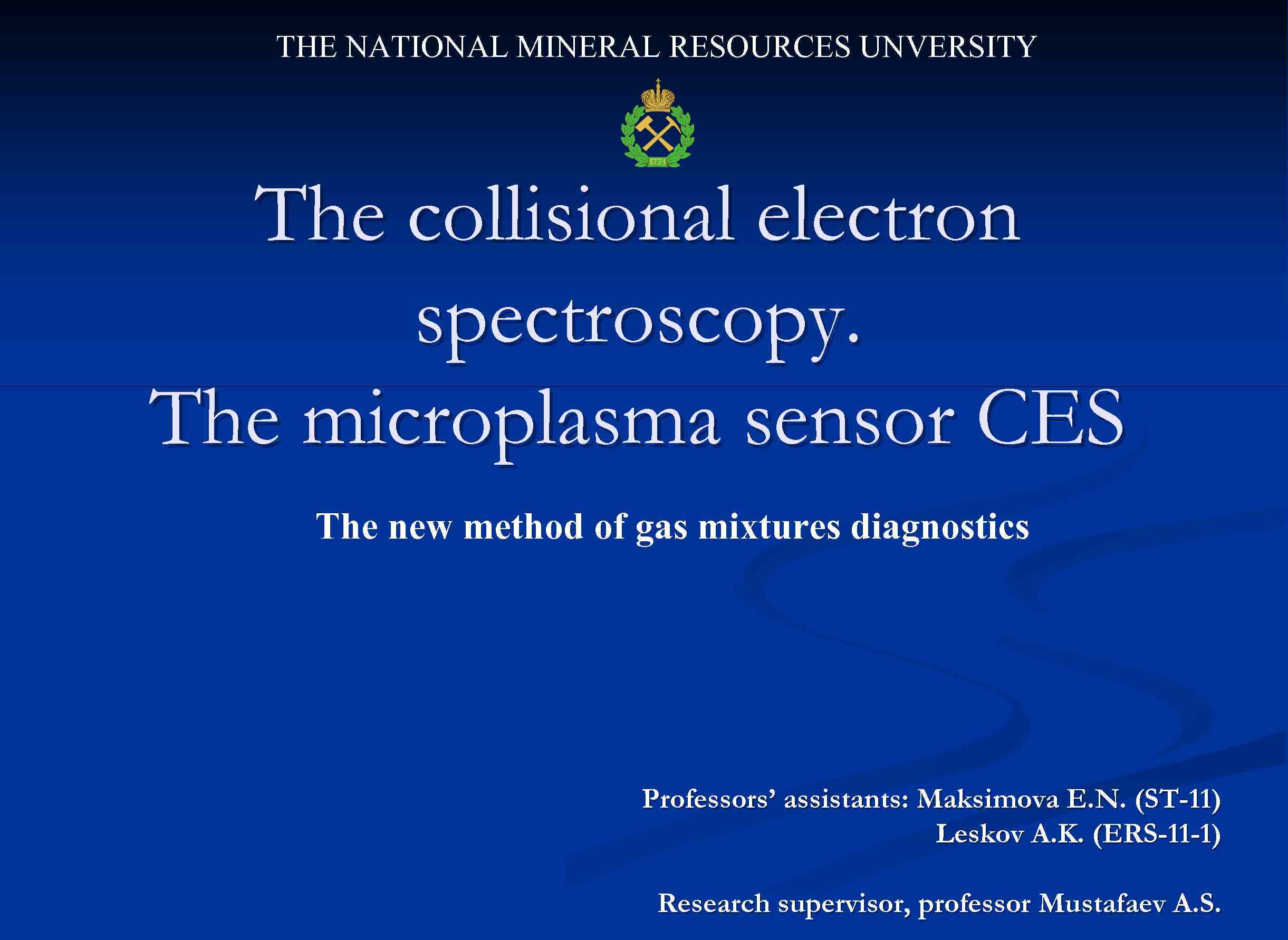 THE NATIONAL MINERAL RESOURCES UNVERSITY The collisional electron spectroscopy. The microplasma sensor CES The new method of gas mixtures diagnostics Professors’ assistants: Maksimova E. N. (ST-11) Leskov A. K. (ERS-11 -1) Research supervisor, professor Mustafaev A. S.
THE NATIONAL MINERAL RESOURCES UNVERSITY The collisional electron spectroscopy. The microplasma sensor CES The new method of gas mixtures diagnostics Professors’ assistants: Maksimova E. N. (ST-11) Leskov A. K. (ERS-11 -1) Research supervisor, professor Mustafaev A. S.
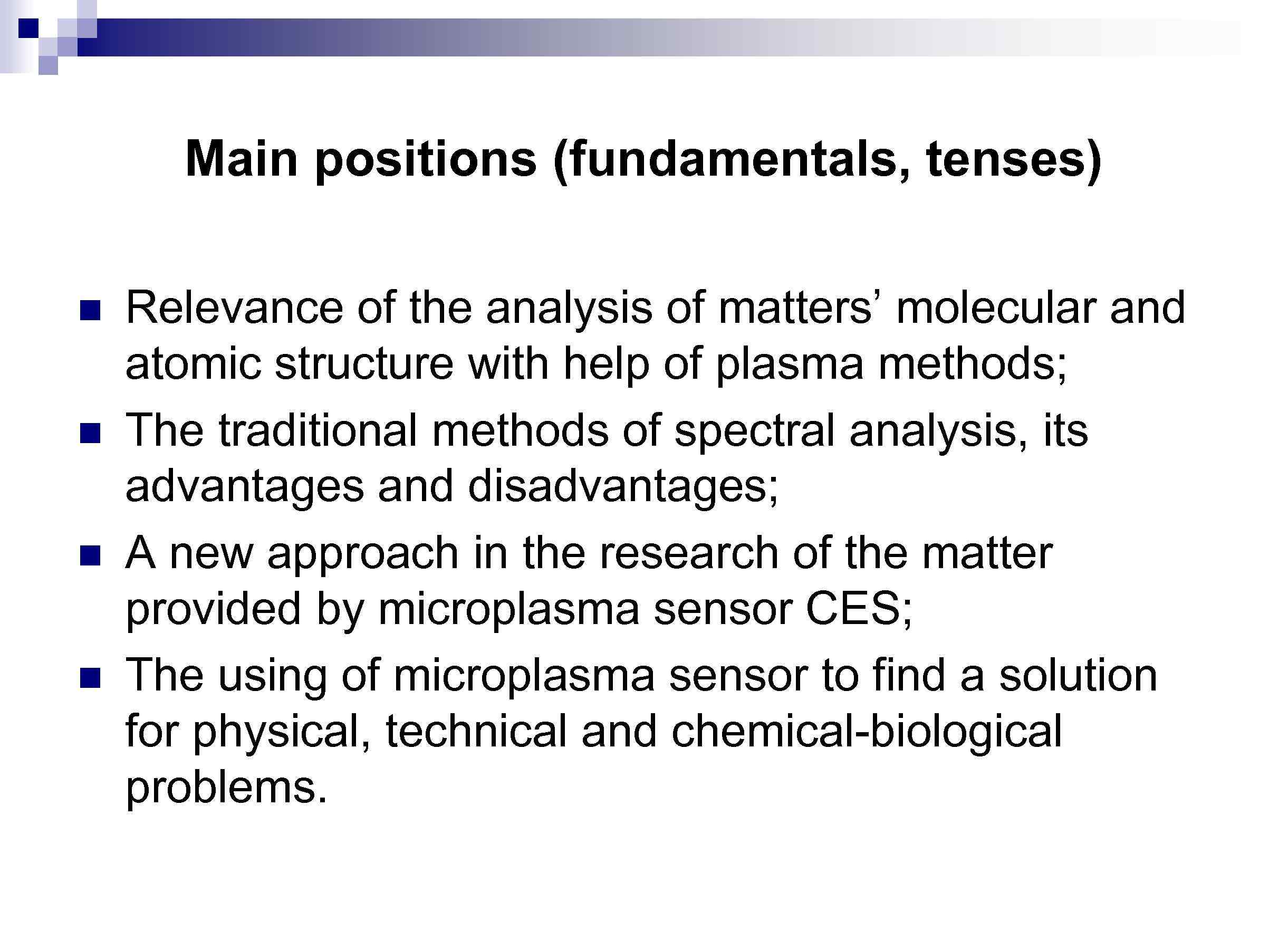 Main positions (fundamentals, tenses) n n Relevance of the analysis of matters’ molecular and atomic structure with help of plasma methods; The traditional methods of spectral analysis, its advantages and disadvantages; A new approach in the research of the matter provided by microplasma sensor CES; The using of microplasma sensor to find a solution for physical, technical and chemical-biological problems.
Main positions (fundamentals, tenses) n n Relevance of the analysis of matters’ molecular and atomic structure with help of plasma methods; The traditional methods of spectral analysis, its advantages and disadvantages; A new approach in the research of the matter provided by microplasma sensor CES; The using of microplasma sensor to find a solution for physical, technical and chemical-biological problems.
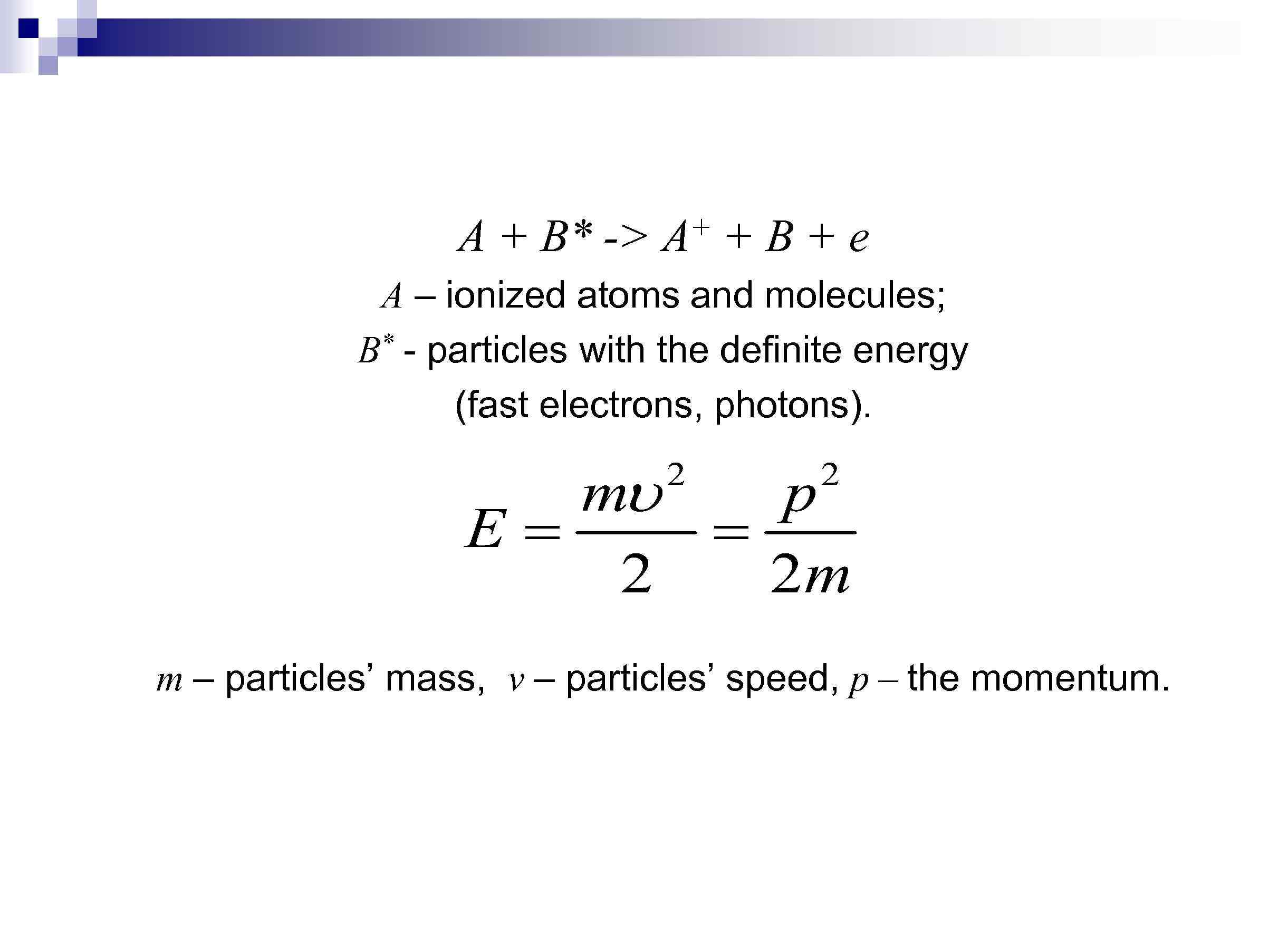 A + B* -> + A +B+e А – ionized atoms and molecules; * - particles with the definite energy В (fast electrons, photons). m – particles’ mass, v – particles’ speed, p – the momentum.
A + B* -> + A +B+e А – ionized atoms and molecules; * - particles with the definite energy В (fast electrons, photons). m – particles’ mass, v – particles’ speed, p – the momentum.
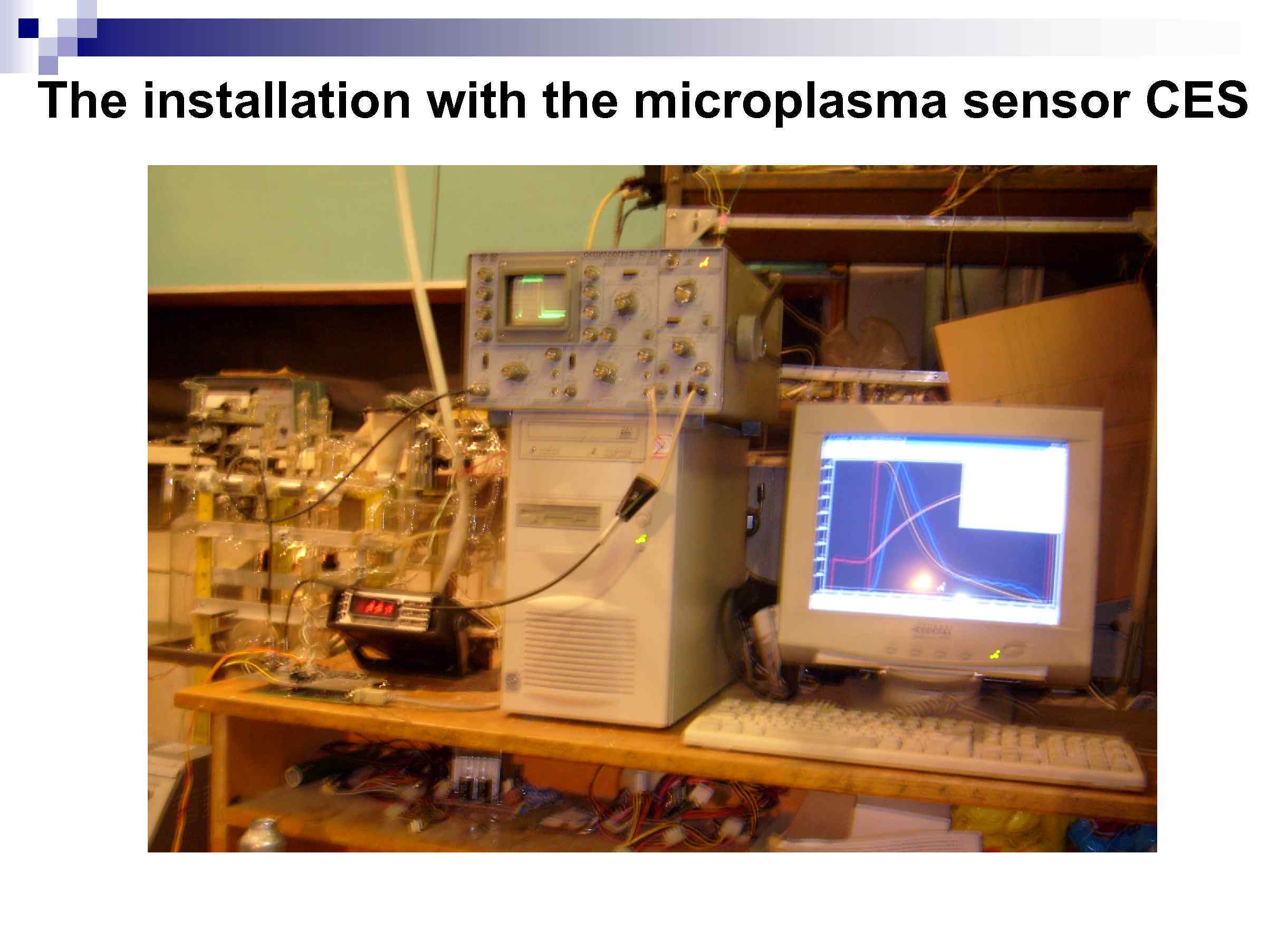 The installation with the microplasma sensor CES
The installation with the microplasma sensor CES
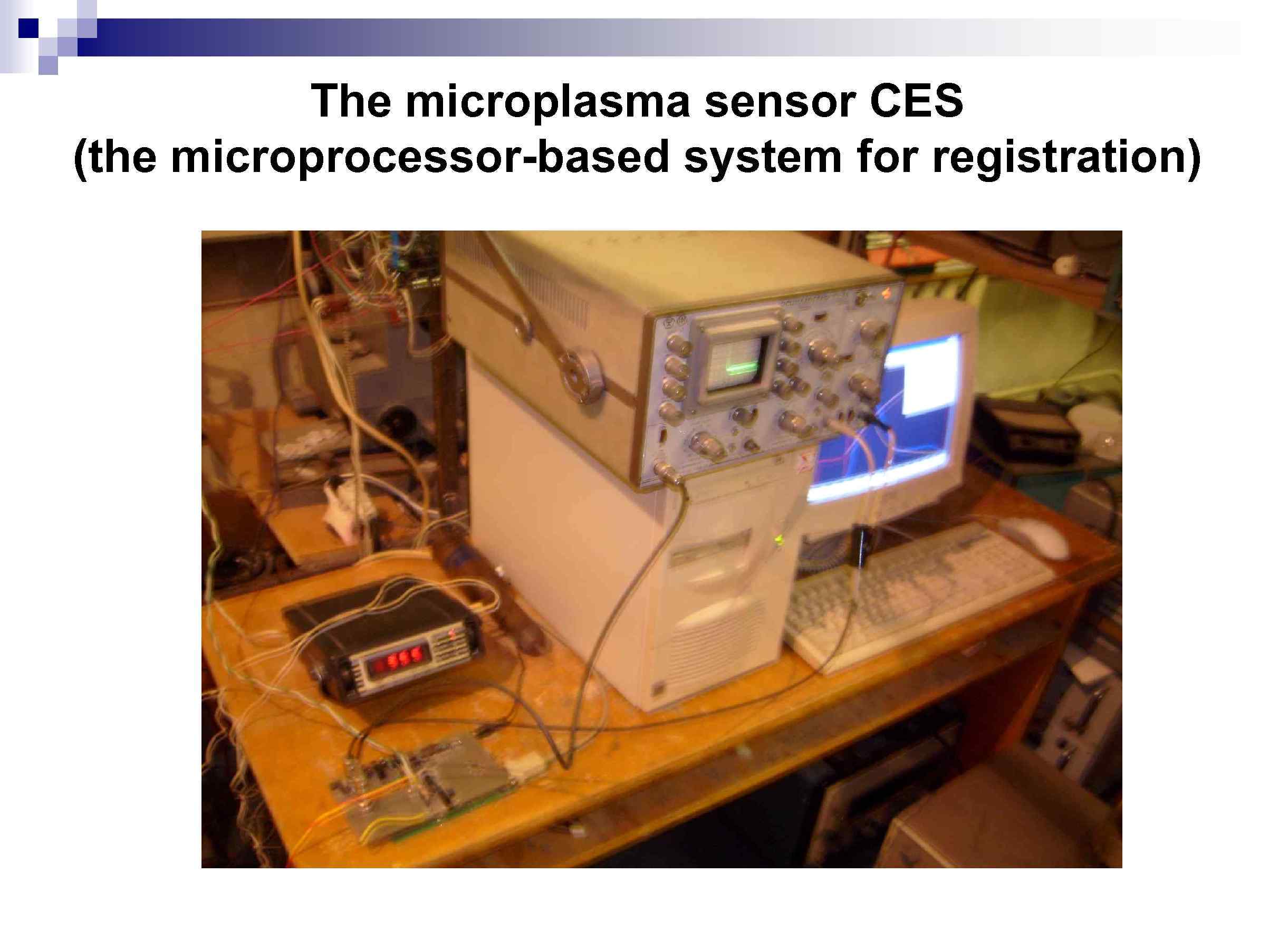 The microplasma sensor CES (the microprocessor-based system for registration)
The microplasma sensor CES (the microprocessor-based system for registration)
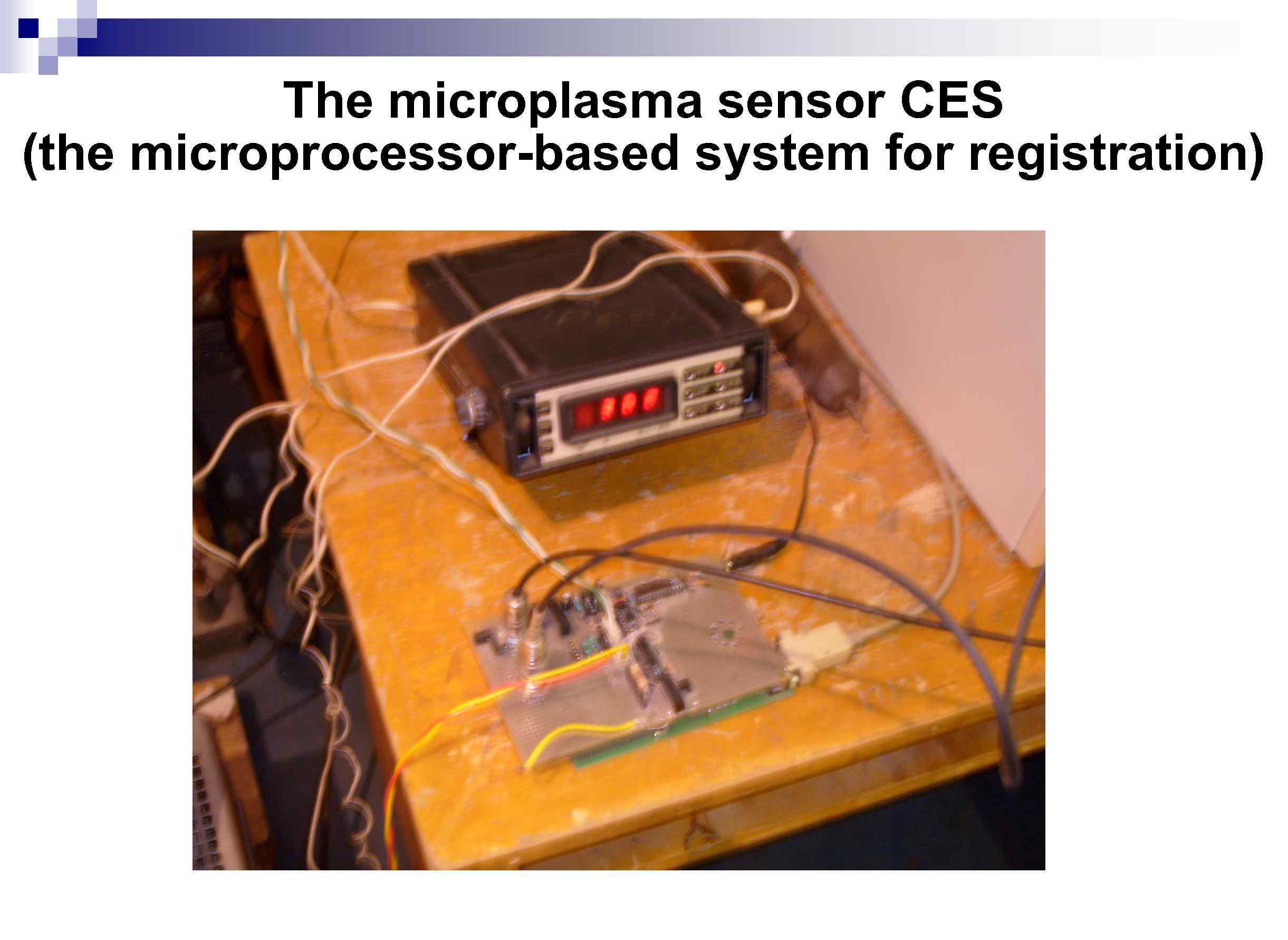 The microplasma sensor CES (the microprocessor-based system for registration)
The microplasma sensor CES (the microprocessor-based system for registration)
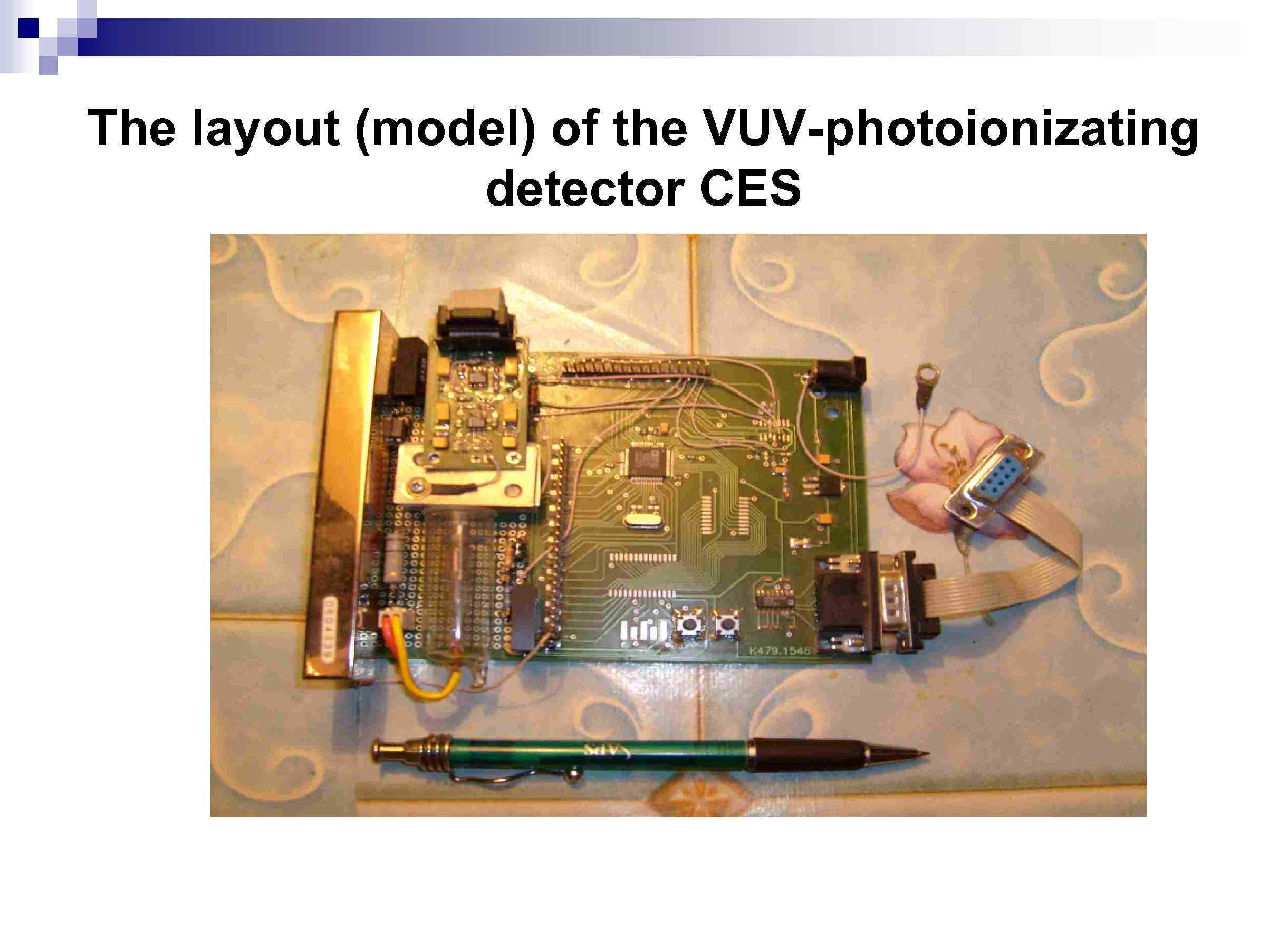 The layout (model) of the VUV-photoionizating detector CES
The layout (model) of the VUV-photoionizating detector CES
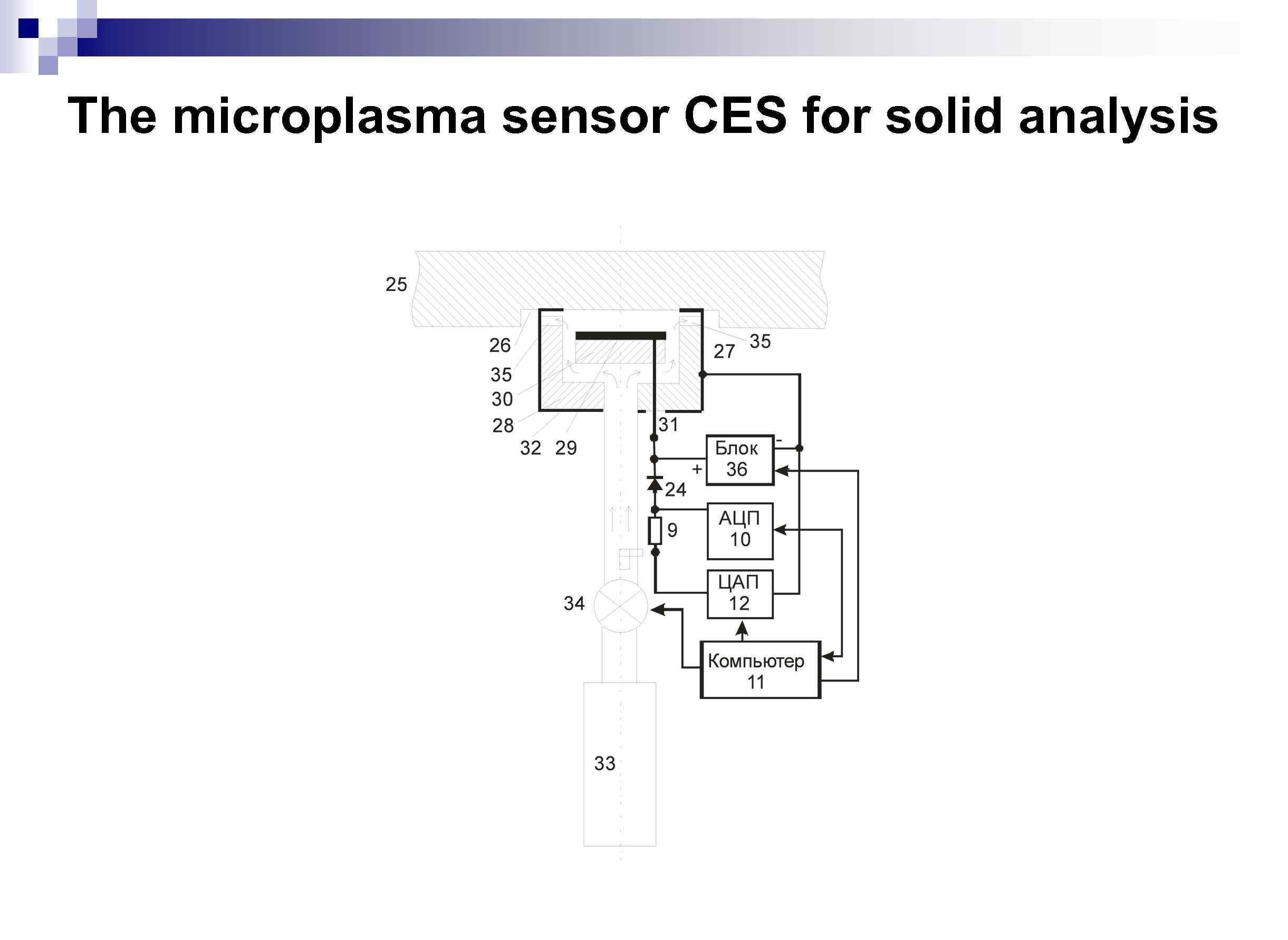 The microplasma sensor CES for solid analysis
The microplasma sensor CES for solid analysis
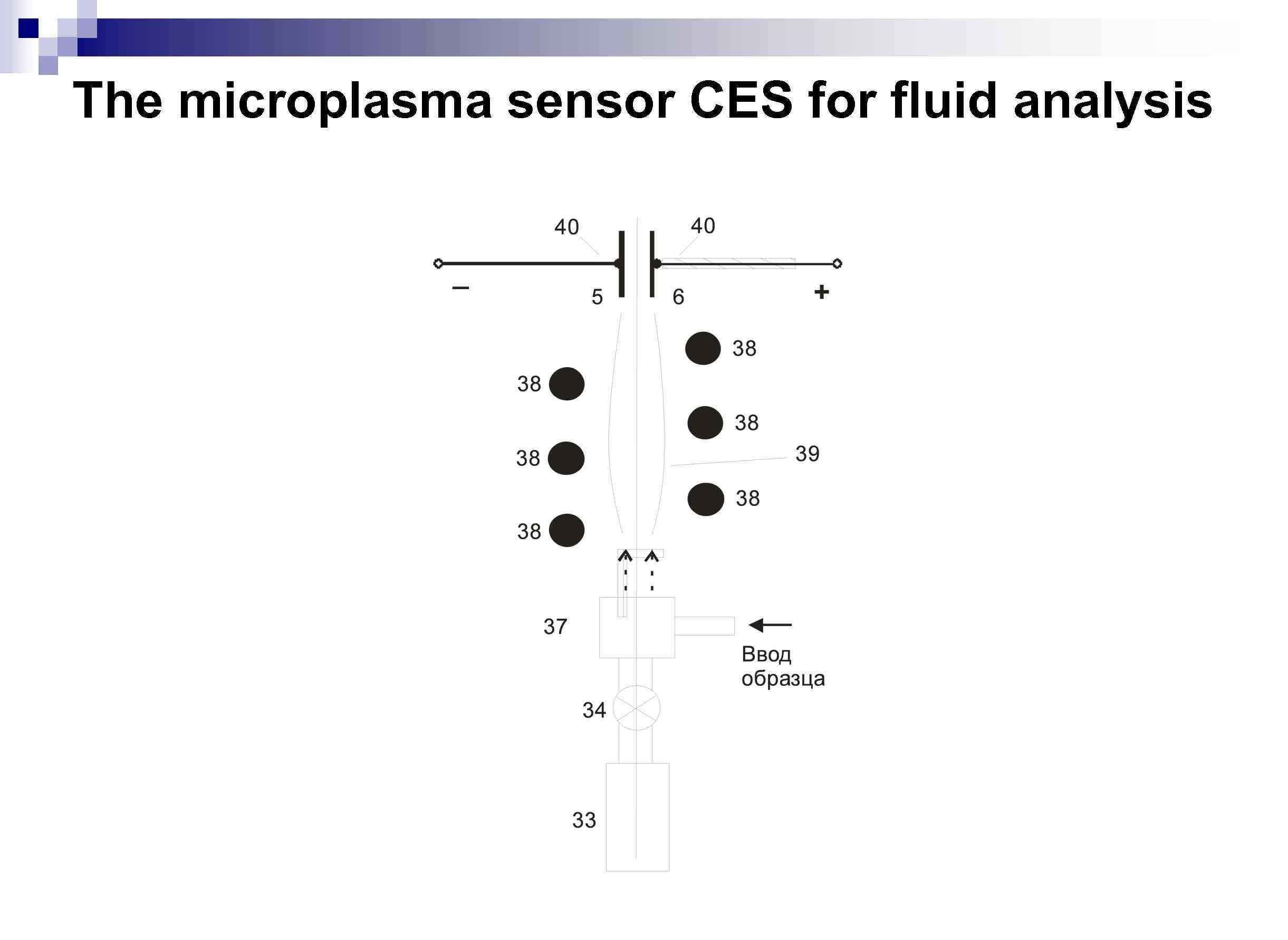 The microplasma sensor CES for fluid analysis
The microplasma sensor CES for fluid analysis
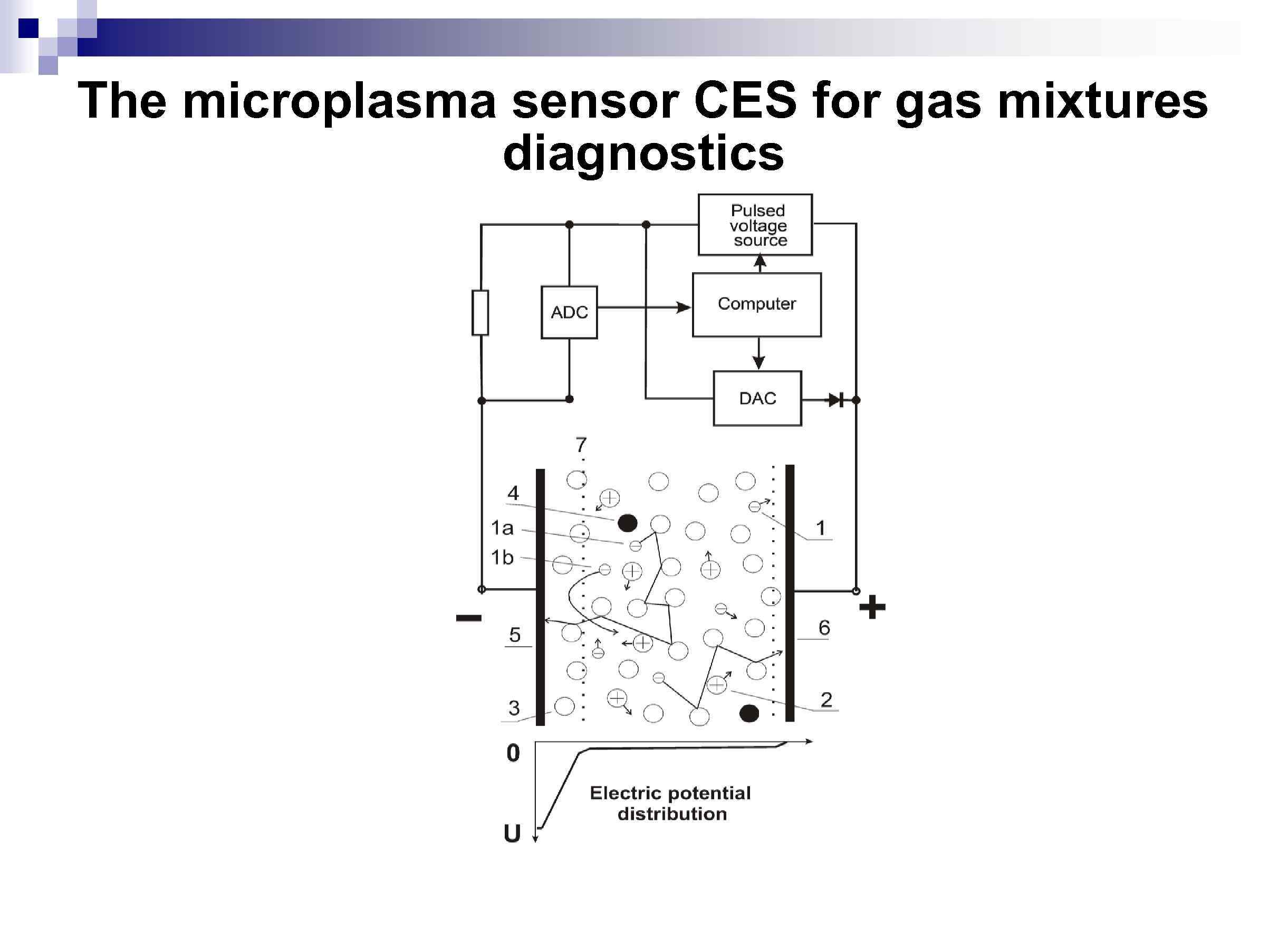 The microplasma sensor CES for gas mixtures diagnostics
The microplasma sensor CES for gas mixtures diagnostics
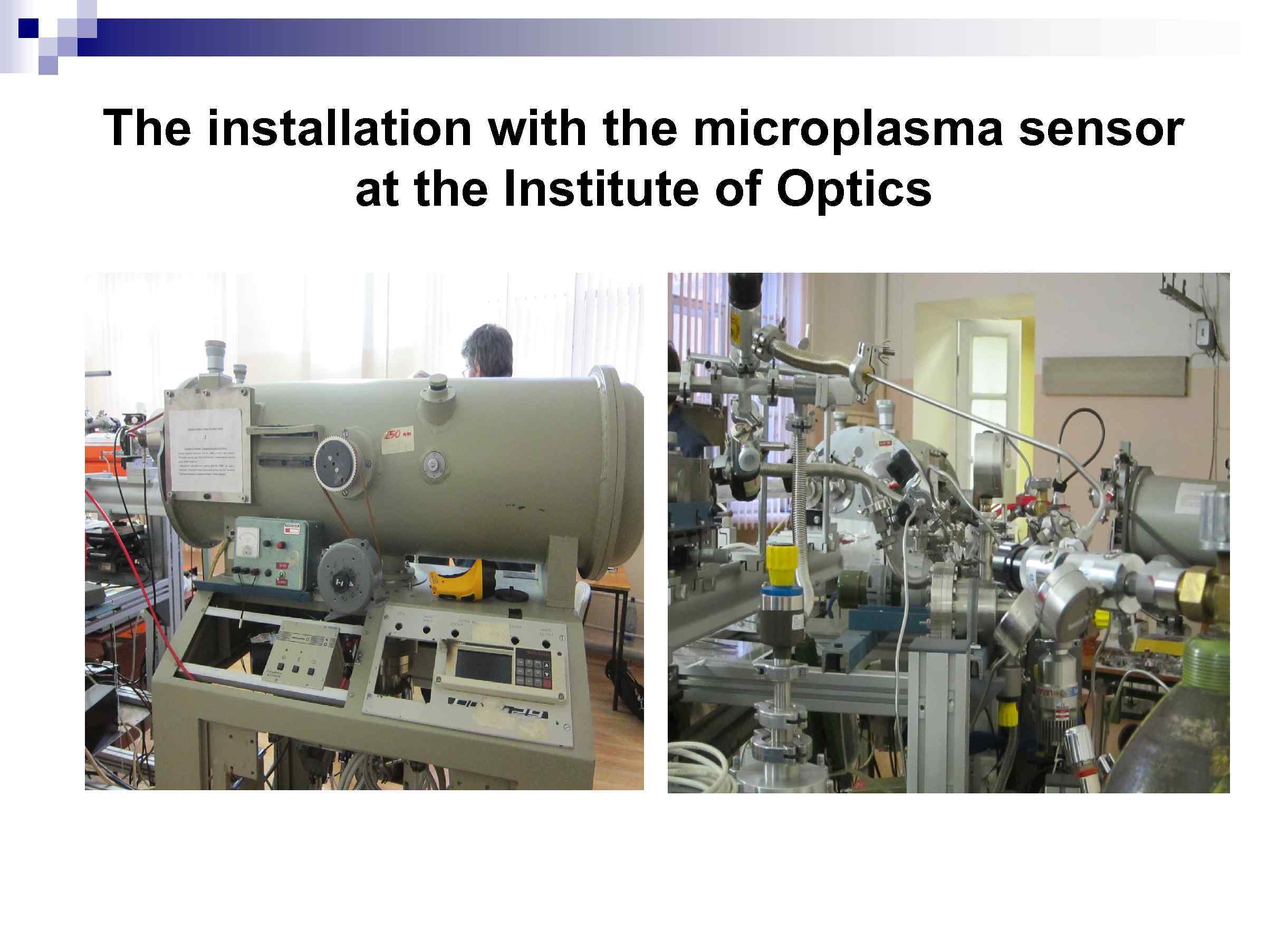 The installation with the microplasma sensor at the Institute of Optics
The installation with the microplasma sensor at the Institute of Optics
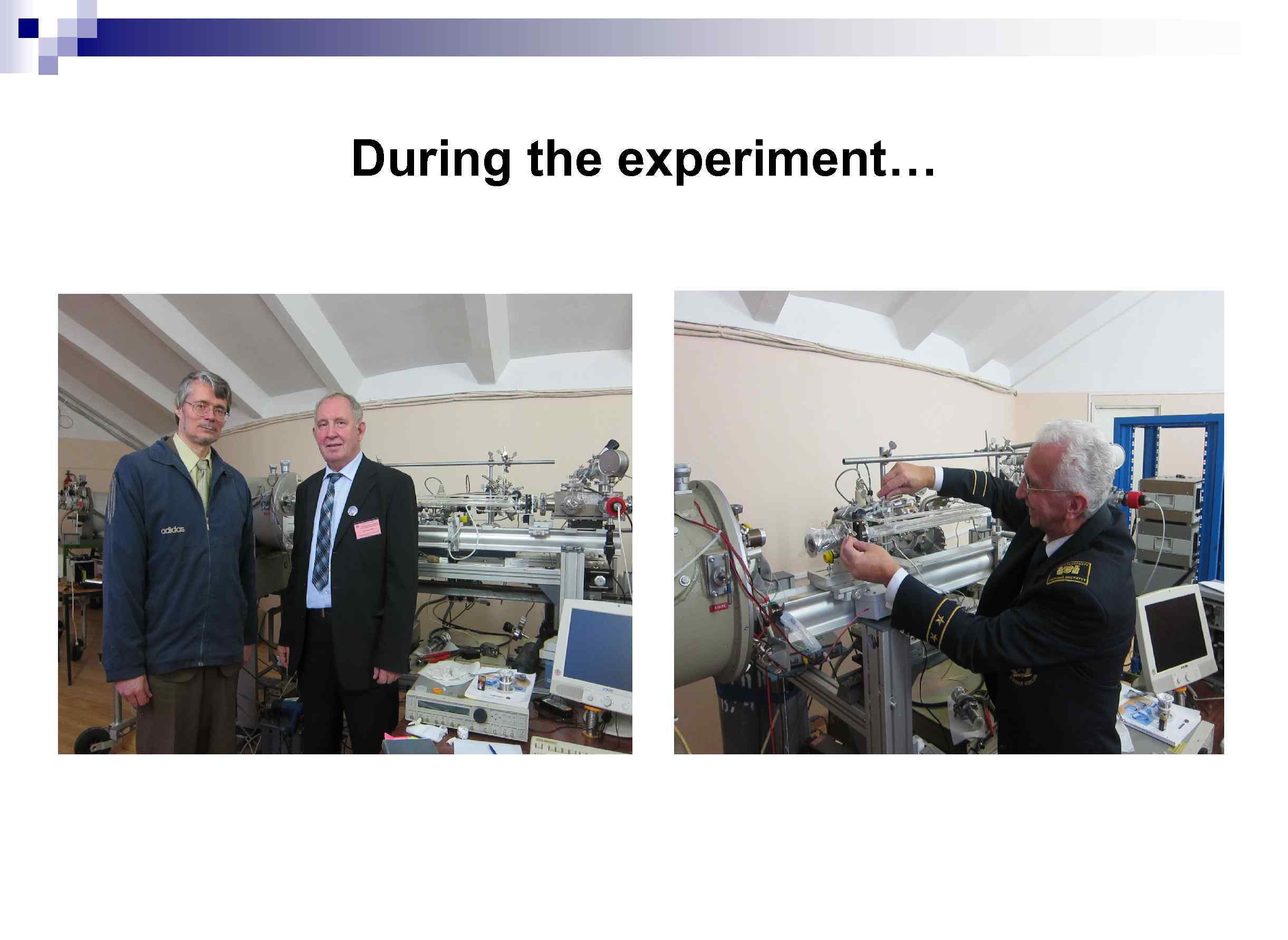 During the experiment…
During the experiment…
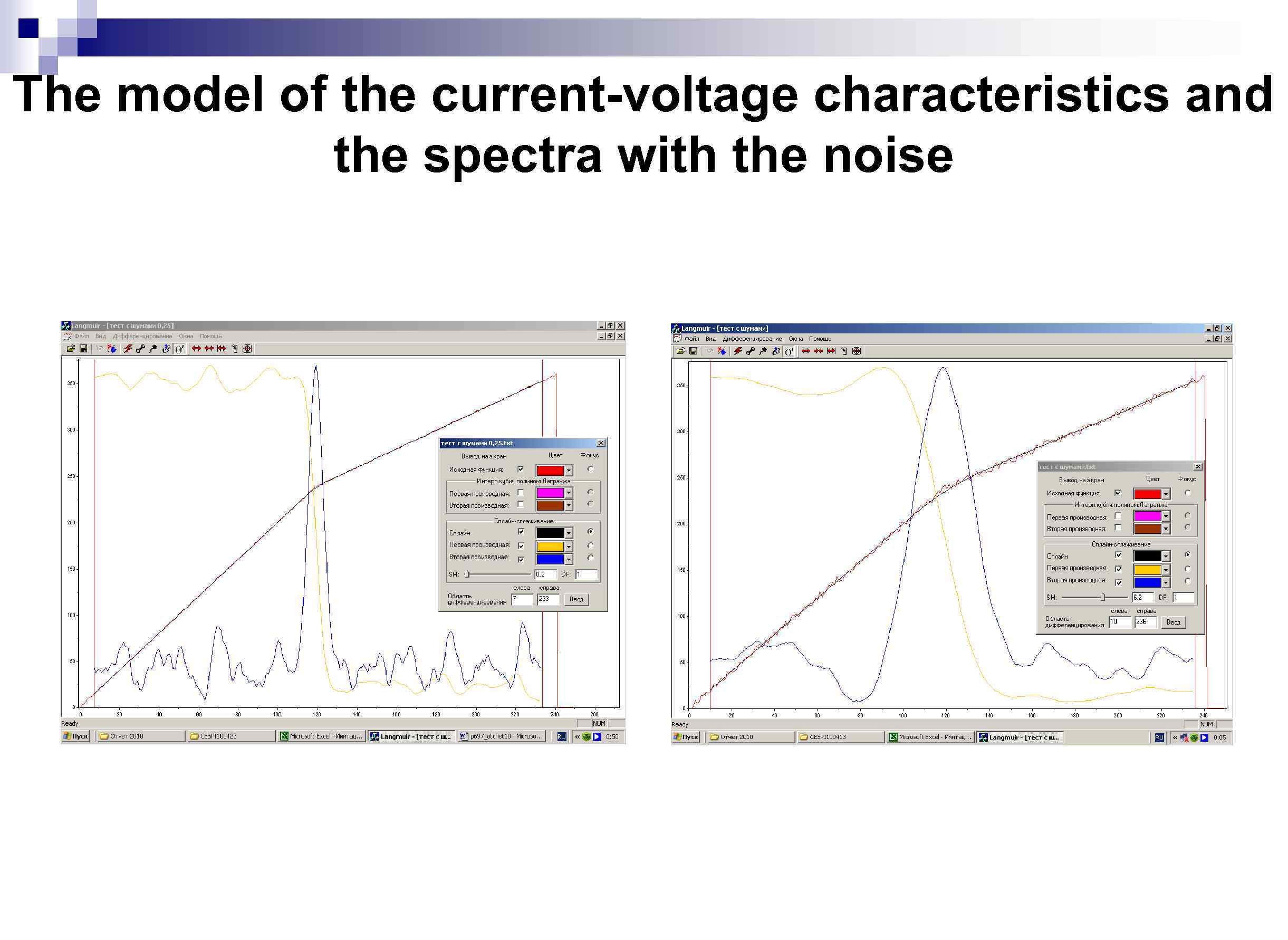 The model of the current-voltage characteristics and the spectra with the noise
The model of the current-voltage characteristics and the spectra with the noise
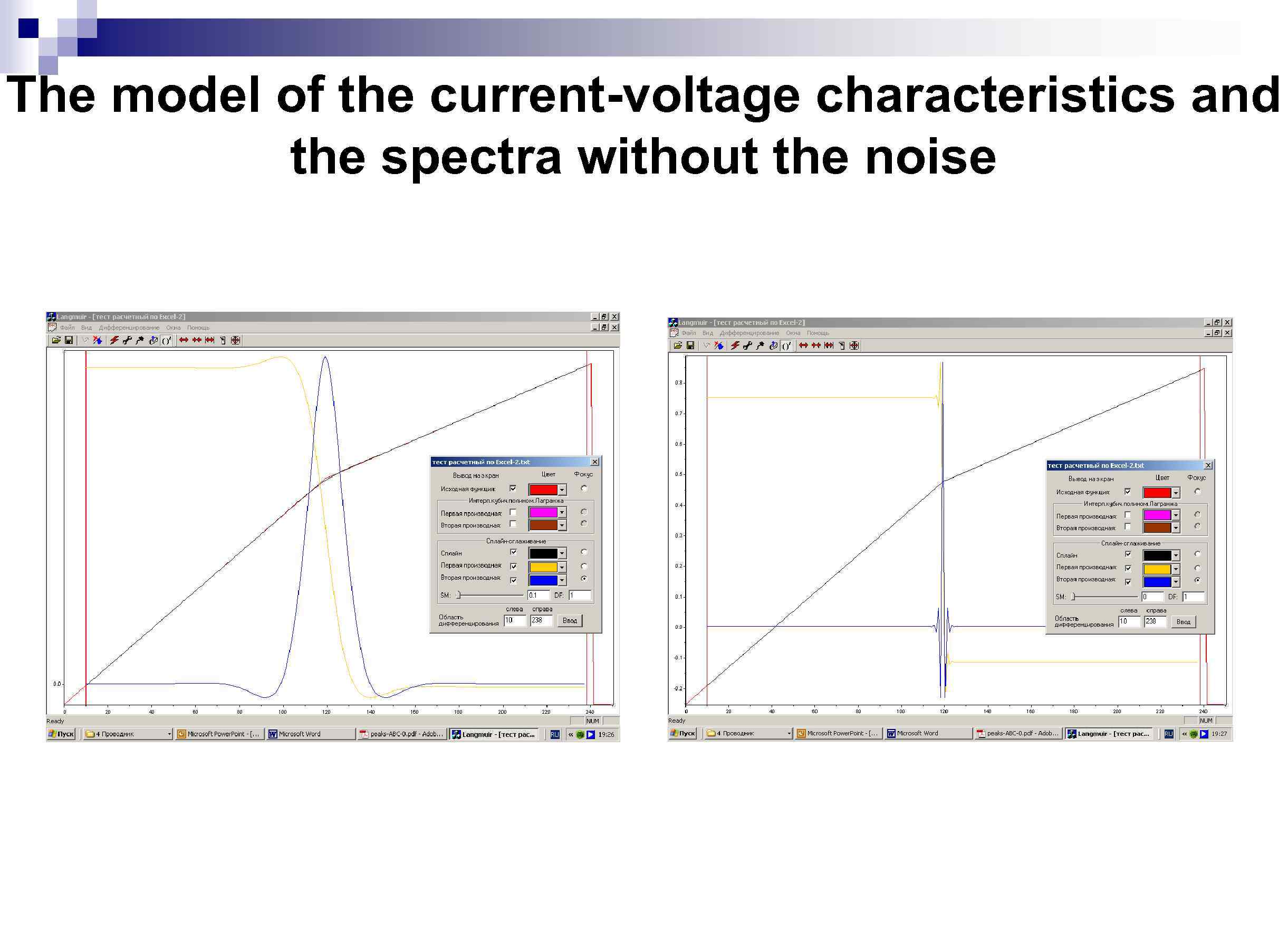 The model of the current-voltage characteristics and the spectra without the noise
The model of the current-voltage characteristics and the spectra without the noise
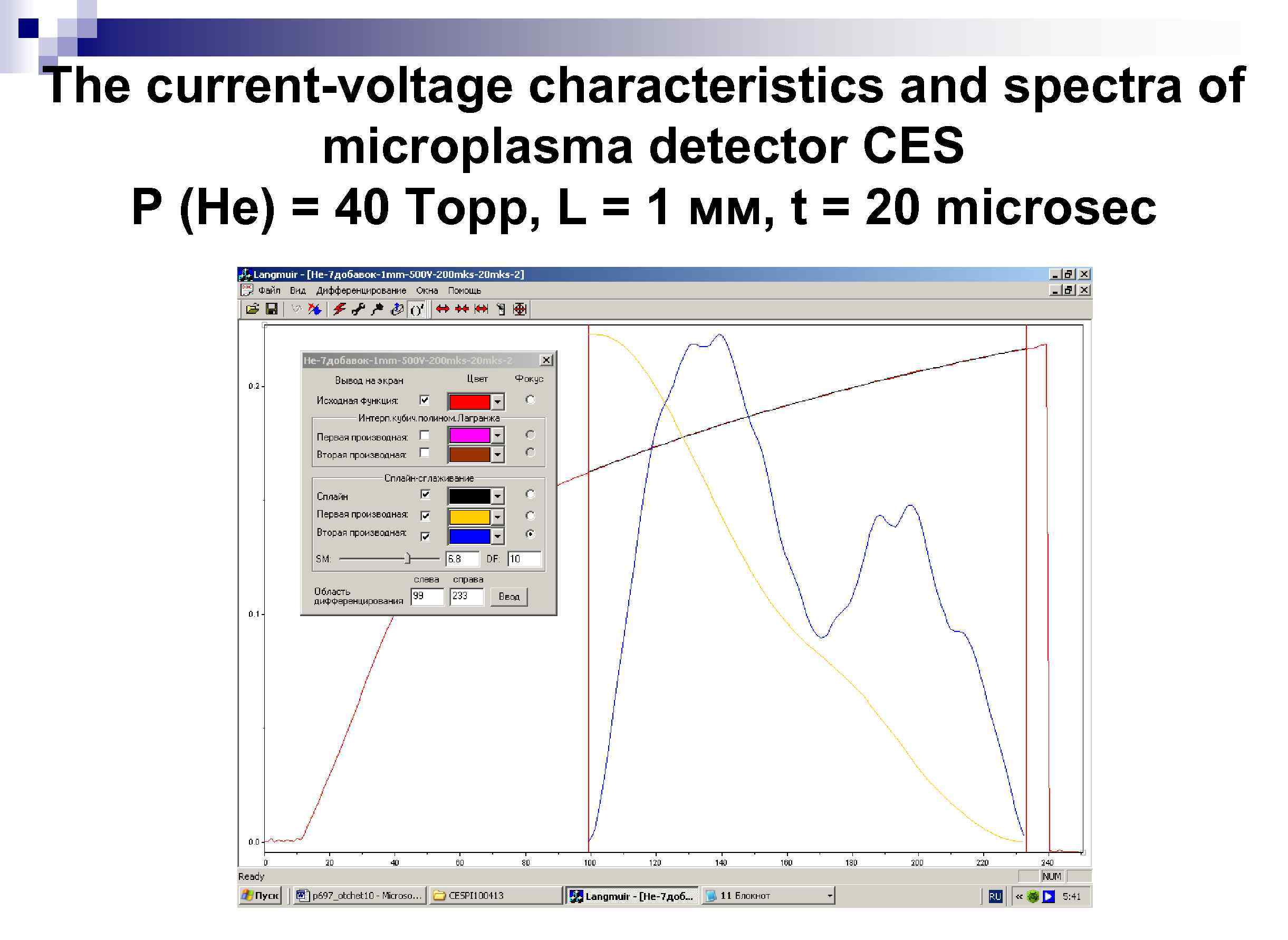 The current-voltage characteristics and spectra of microplasma detector CES P (He) = 40 Торр, L = 1 мм, t = 20 microsec
The current-voltage characteristics and spectra of microplasma detector CES P (He) = 40 Торр, L = 1 мм, t = 20 microsec
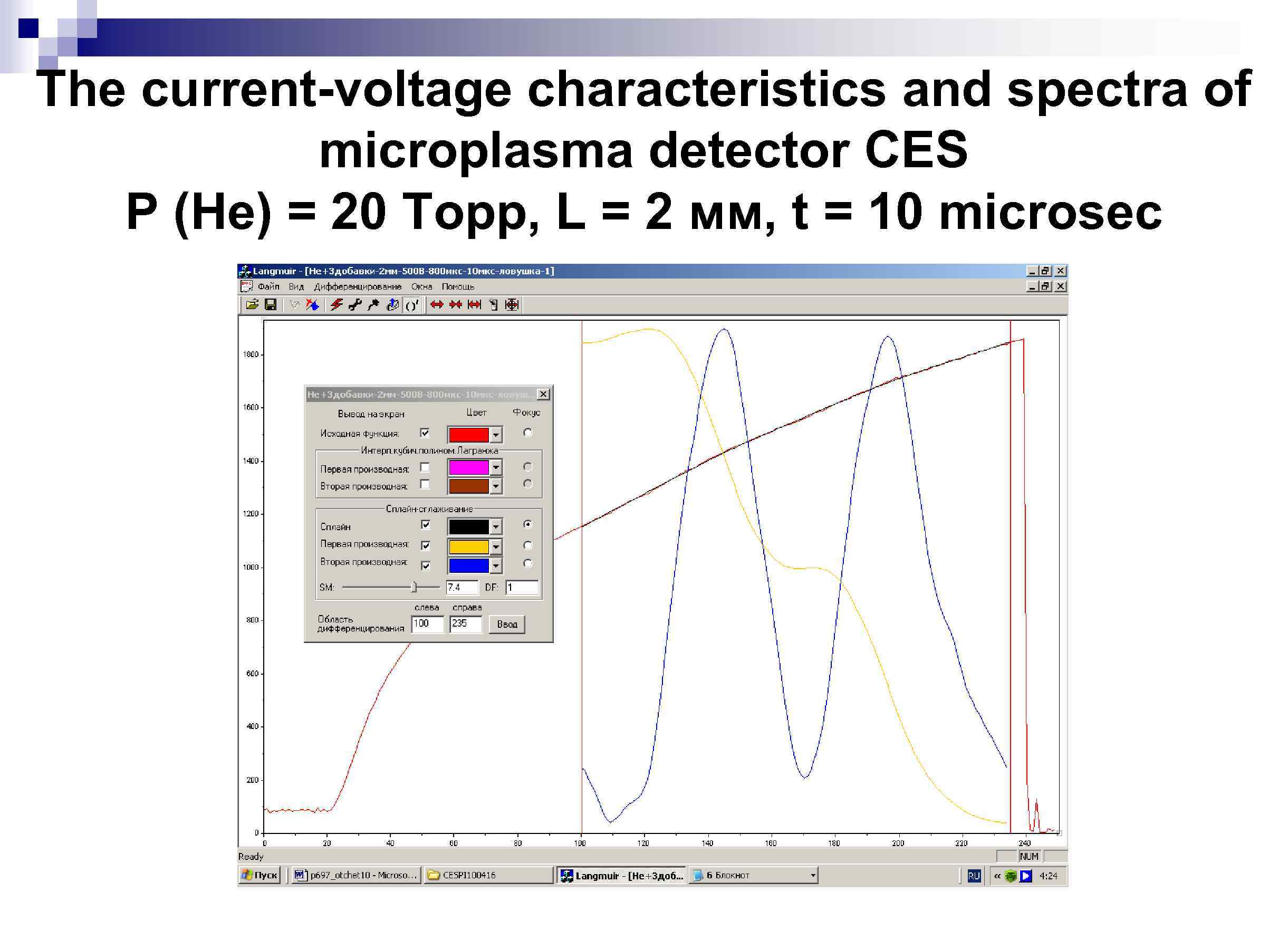 The current-voltage characteristics and spectra of microplasma detector CES P (He) = 20 Торр, L = 2 мм, t = 10 microsec
The current-voltage characteristics and spectra of microplasma detector CES P (He) = 20 Торр, L = 2 мм, t = 10 microsec
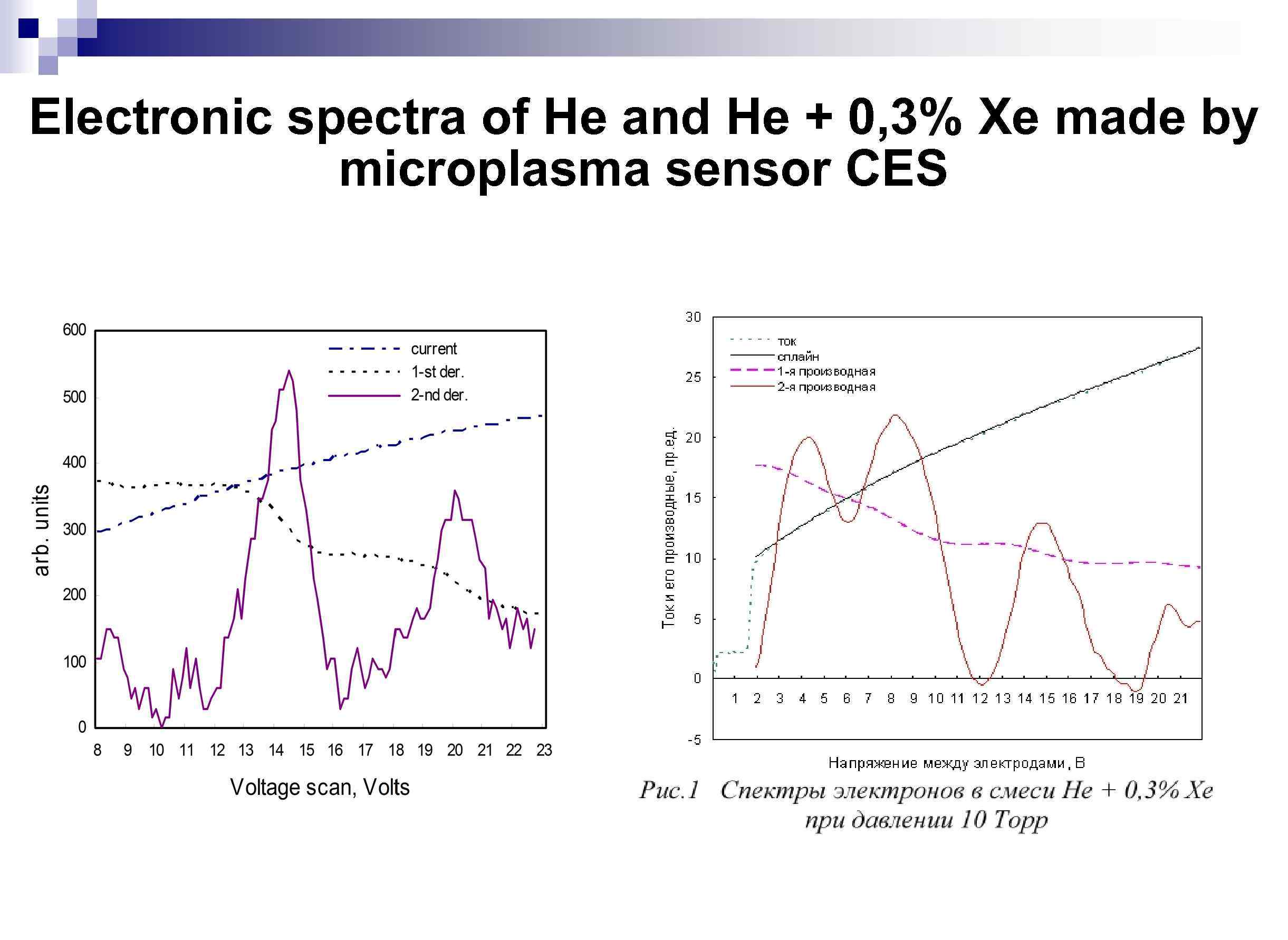 Electronic spectra of He and He + 0, 3% Xe made by microplasma sensor CES
Electronic spectra of He and He + 0, 3% Xe made by microplasma sensor CES
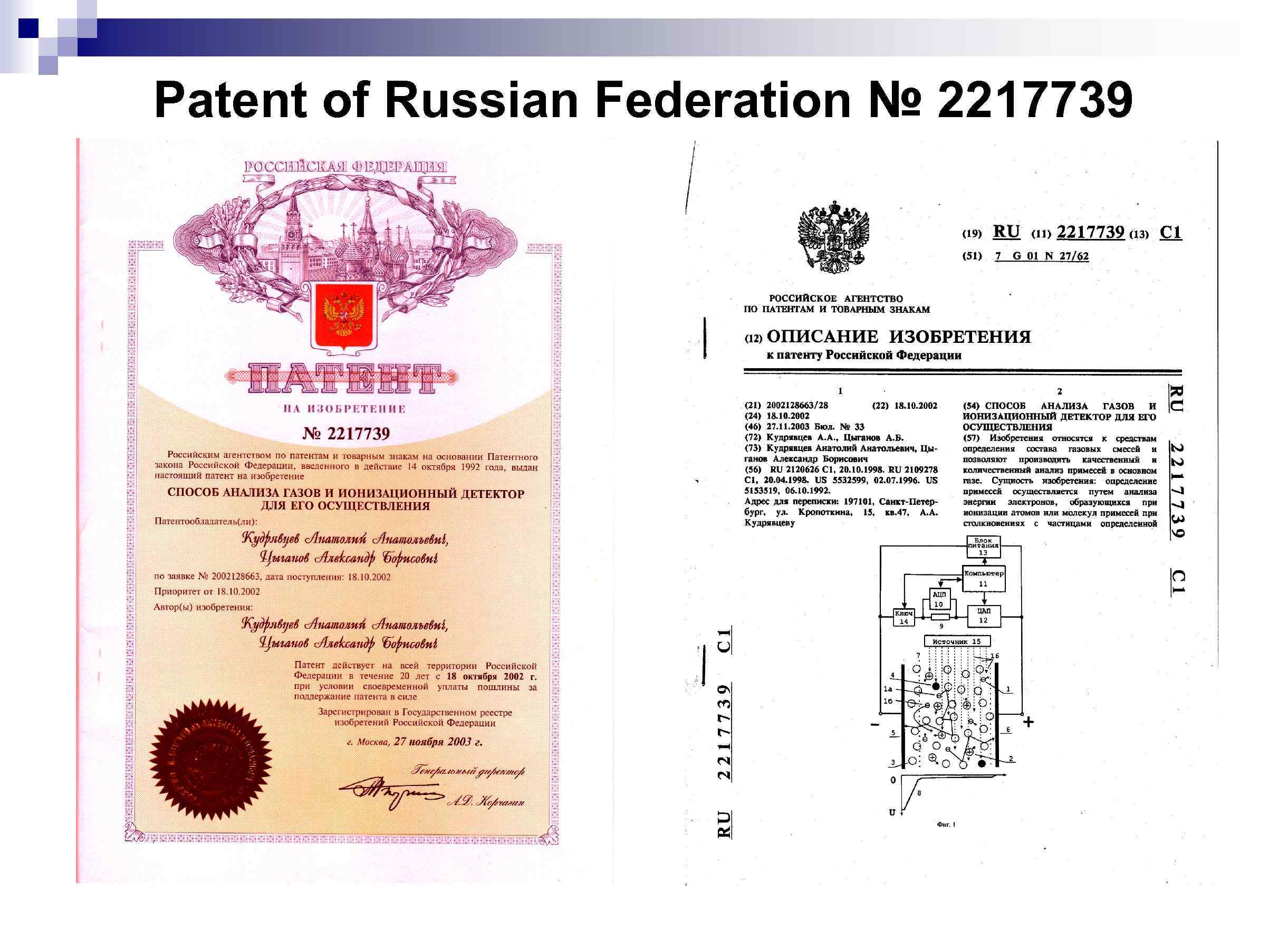 Patent of Russian Federation № 2217739
Patent of Russian Federation № 2217739
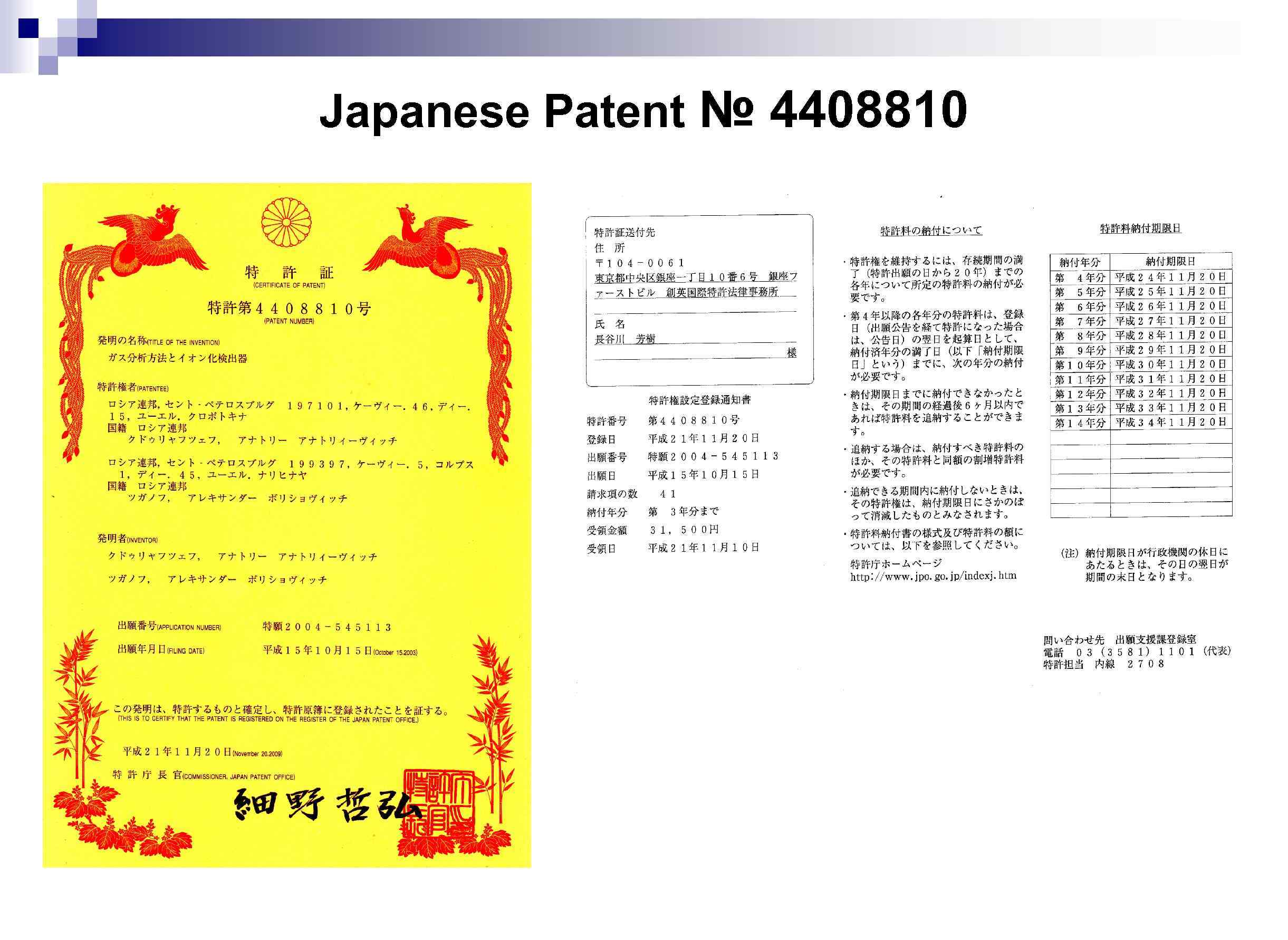 Japanese Patent № 4408810
Japanese Patent № 4408810
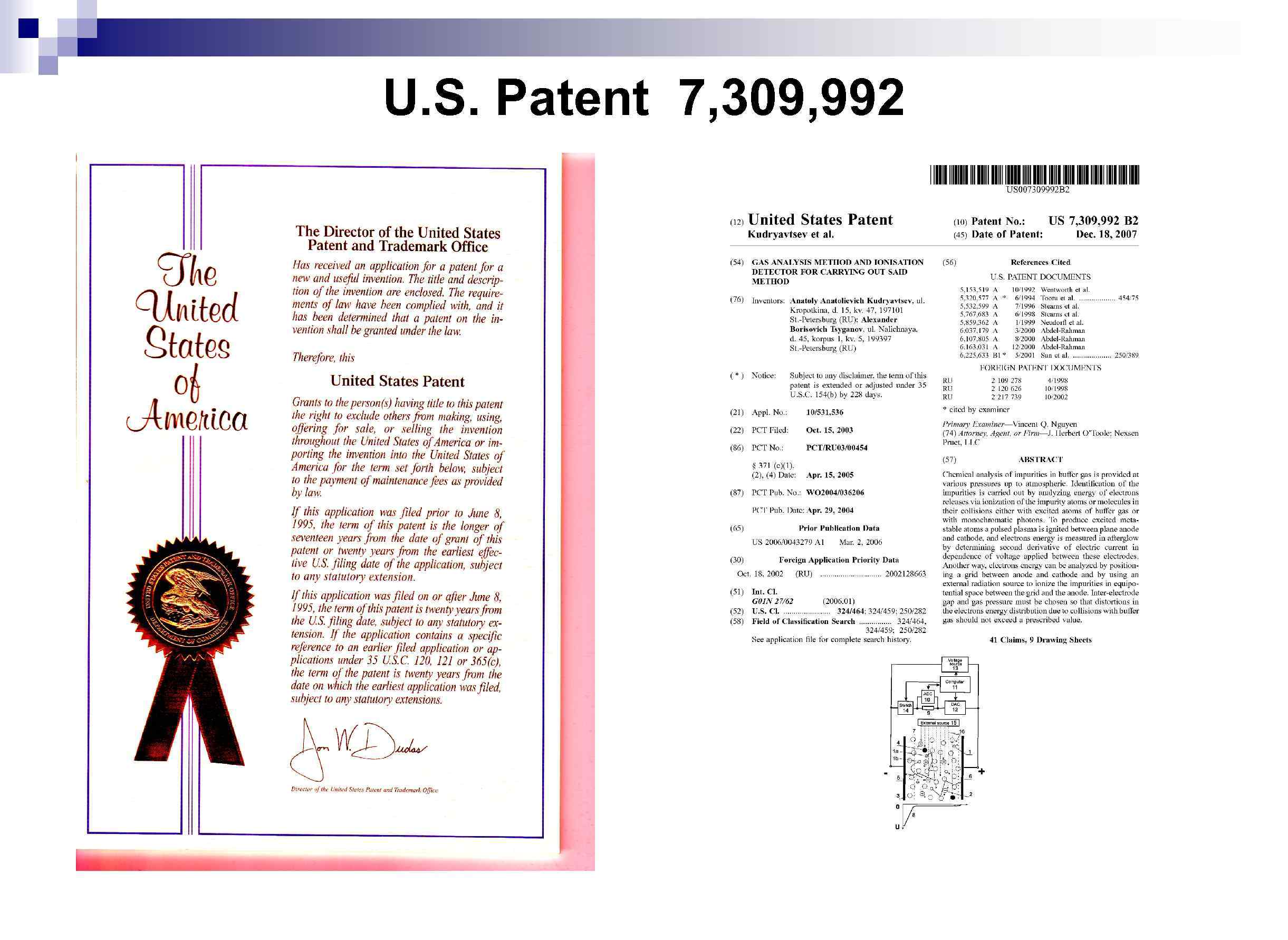 U. S. Patent 7, 309, 992
U. S. Patent 7, 309, 992
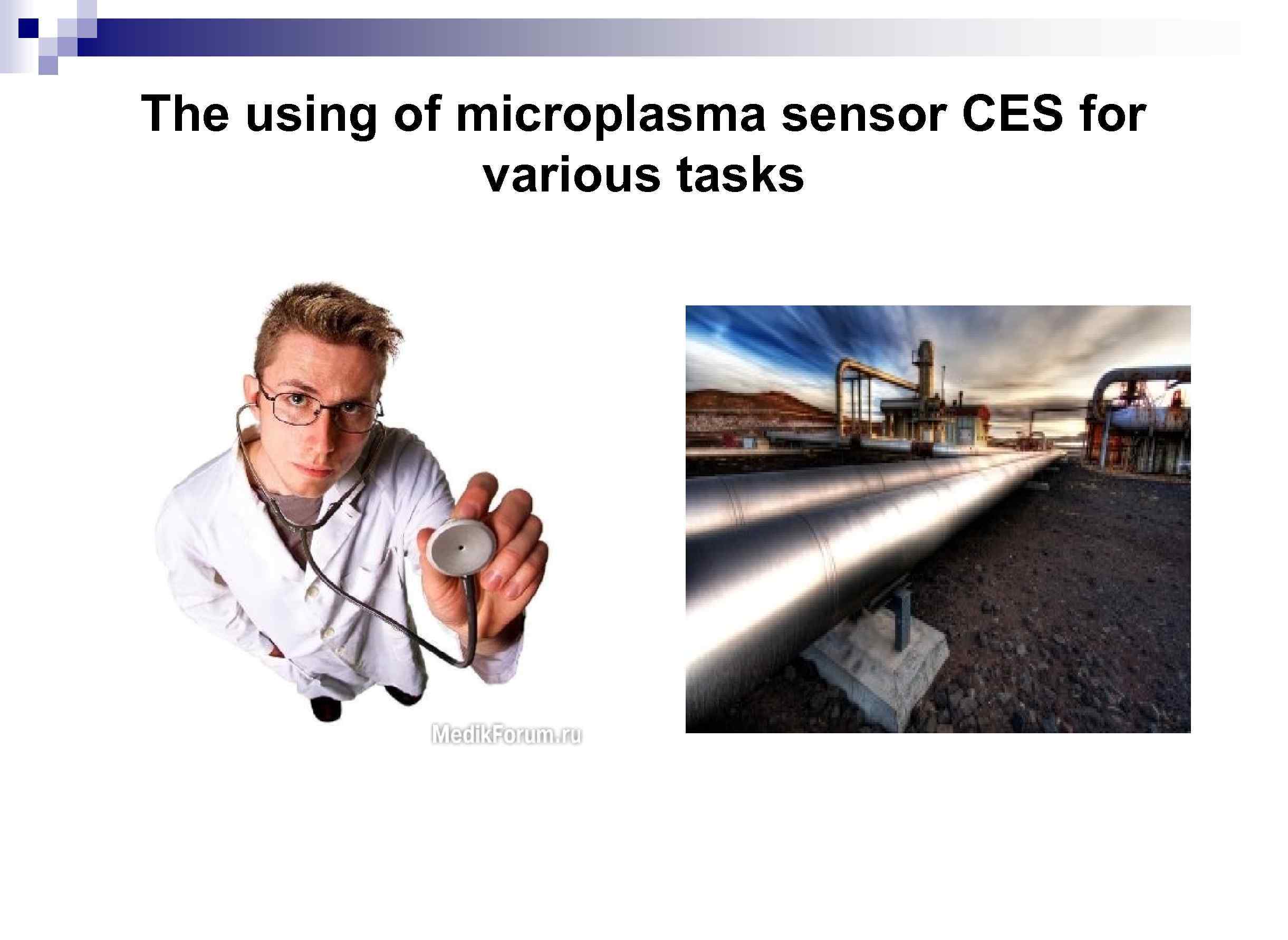 The using of microplasma sensor CES for various tasks
The using of microplasma sensor CES for various tasks
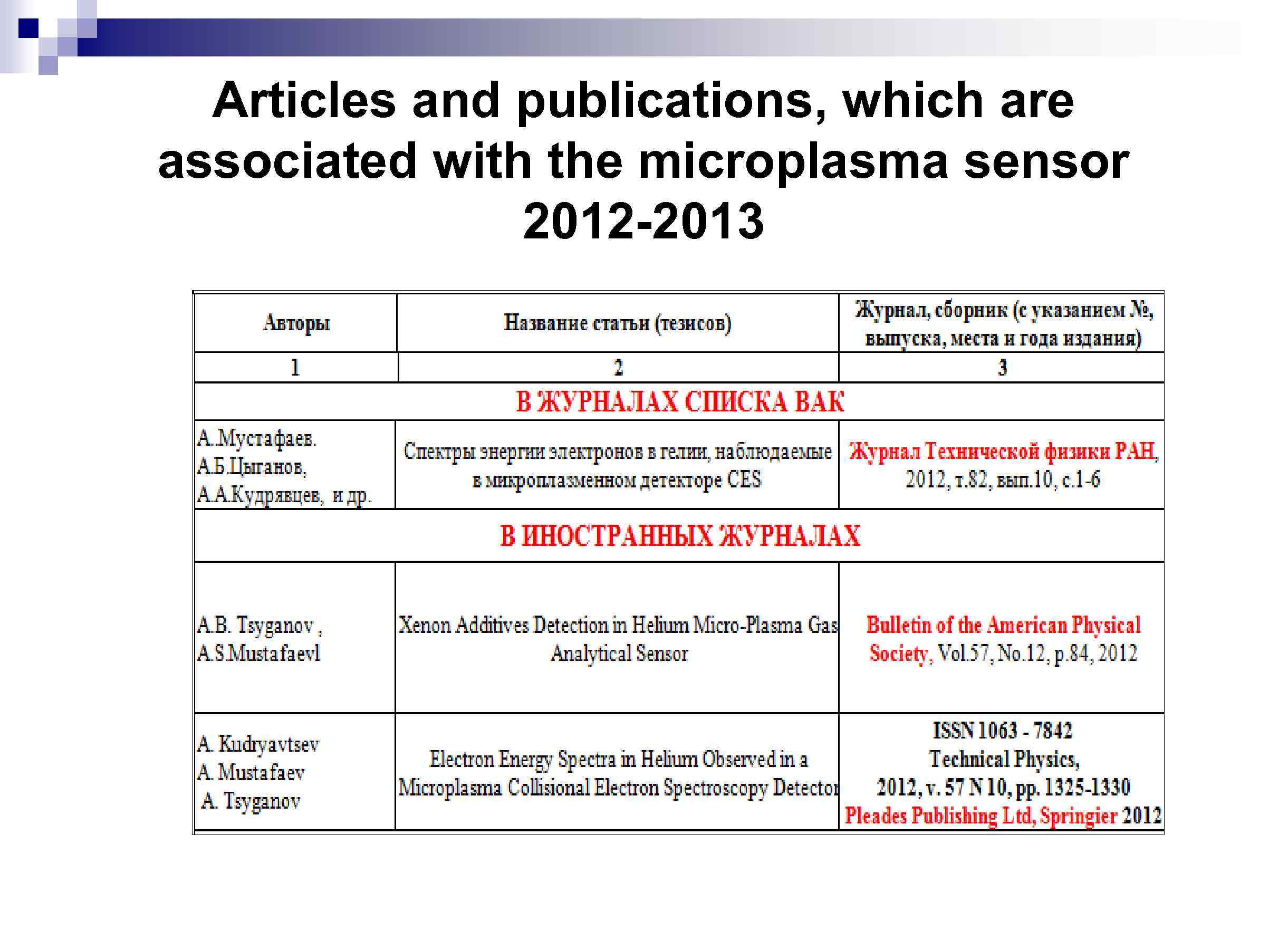 Articles and publications, which are associated with the microplasma sensor 2012 -2013
Articles and publications, which are associated with the microplasma sensor 2012 -2013
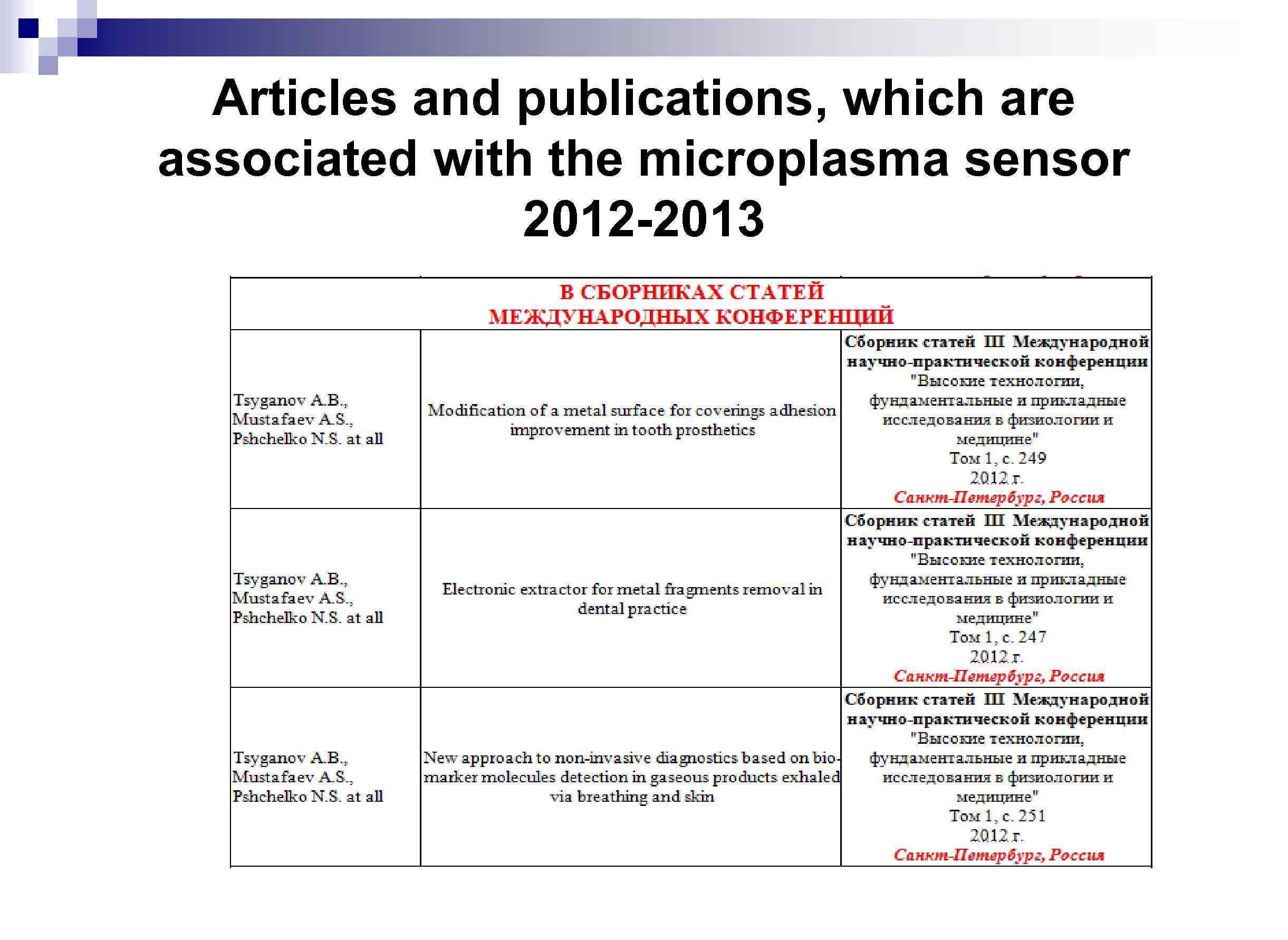 Articles and publications, which are associated with the microplasma sensor 2012 -2013
Articles and publications, which are associated with the microplasma sensor 2012 -2013
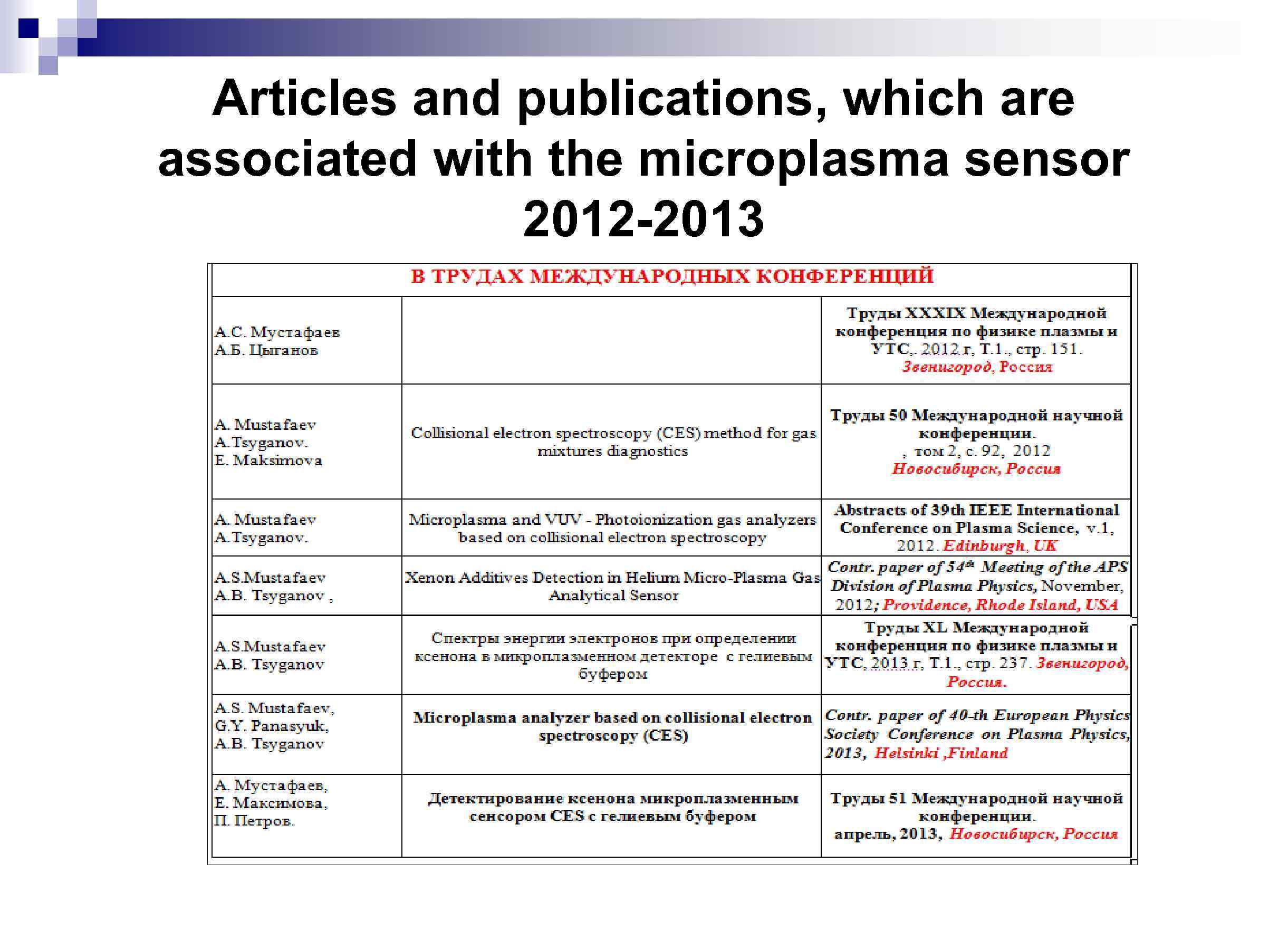 Articles and publications, which are associated with the microplasma sensor 2012 -2013
Articles and publications, which are associated with the microplasma sensor 2012 -2013
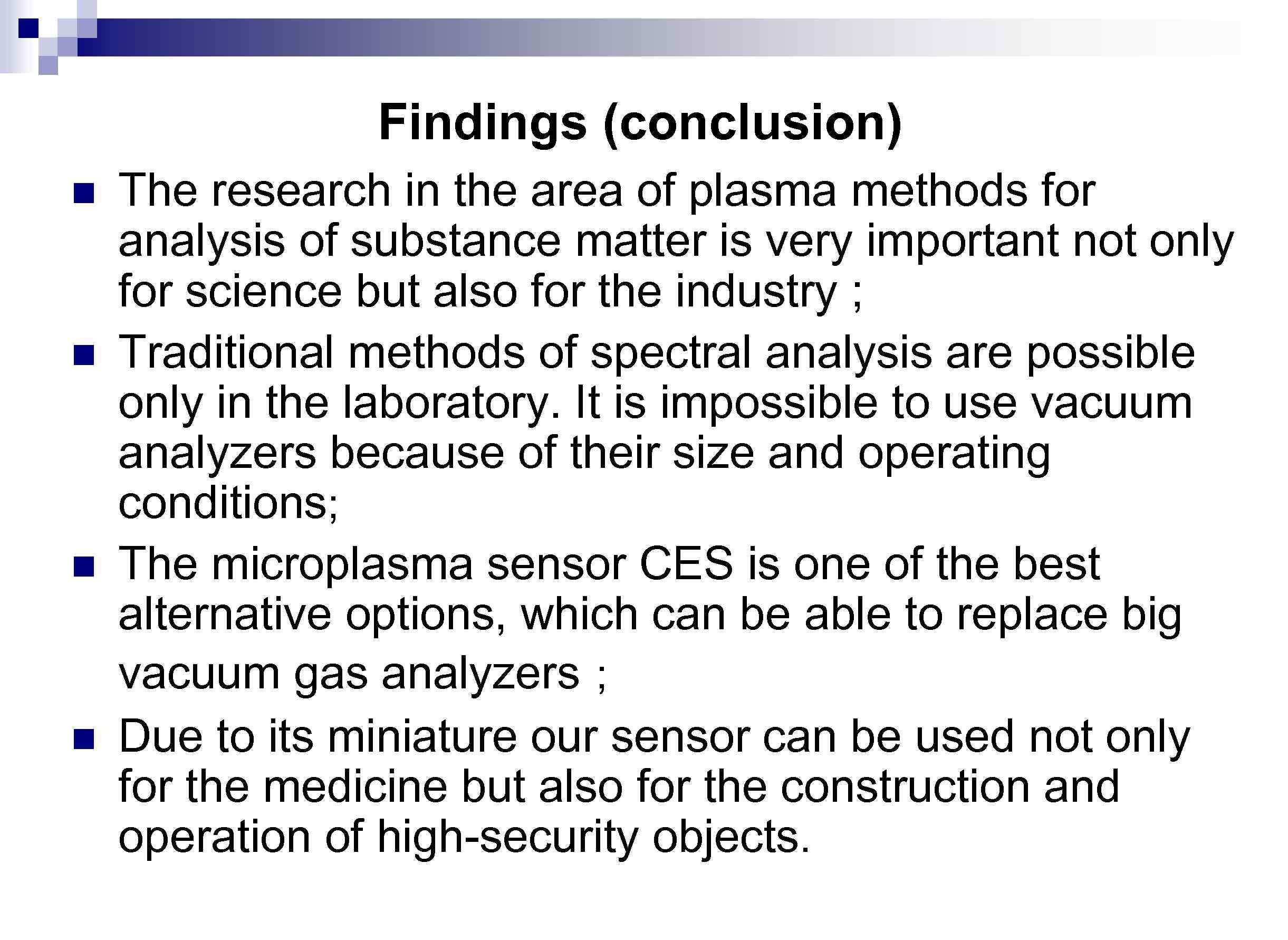 Findings (conclusion) n n The research in the area of plasma methods for analysis of substance matter is very important not only for science but also for the industry ; Traditional methods of spectral analysis are possible only in the laboratory. It is impossible to use vacuum analyzers because of their size and operating conditions; The microplasma sensor CES is one of the best alternative options, which can be able to replace big vacuum gas analyzers ; Due to its miniature our sensor can be used not only for the medicine but also for the construction and operation of high-security objects.
Findings (conclusion) n n The research in the area of plasma methods for analysis of substance matter is very important not only for science but also for the industry ; Traditional methods of spectral analysis are possible only in the laboratory. It is impossible to use vacuum analyzers because of their size and operating conditions; The microplasma sensor CES is one of the best alternative options, which can be able to replace big vacuum gas analyzers ; Due to its miniature our sensor can be used not only for the medicine but also for the construction and operation of high-security objects.
 Thanks for your attention
Thanks for your attention

























